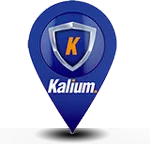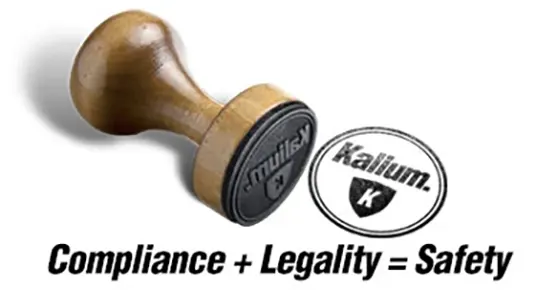CCCR Training for Safe Consumer Chemicals
CCCR: Consumer Chemicals and Containers Regulations, 2001 (SOR/2001-269)
This training aims to support companies that sell hazardous products dedicated to Canadian consumers according to Regulation on Chemicals and Consumer Containers (CCCR).
Each participant will learn to master all the steps in order to properly complete the Health Canada required checklist. We will assess each of the five classes: toxic, corrosive, flammable products, adhesives that quickly stick to the skin as well as containers under pressure.
We also cover the following topics:
- Mixture classification according to all 5 hazard classes
- Definitions and interpretation
- Credible data sources precedence
- Prohibitions
- Substances of special interest presence verification
- Acute Toxicity Assessment (ATE) mixtures calculations
- Mandatory requirements and information according to the hazard classes
- Required Child-resistant packaging criteria
- Containers leak test
- Resources available to carry out mandatory projection and flashback tests by Health Canada
- Steps to follow in case of recalls, complaints and incidents in accordance with Health Canada requirements
- IT tool for CCCR labels authoring and toxicity reports printing (Kalium software)
- Classification and label authoring exercises
We privilege enjoyable learning with the help of games and didactic material. Each participant will receive a training booklet for future reference and a training certificate.


1 - Summary and objectives of the training
Creating a label for a consumer chemical requires advanced knowledge and the ability to use reference tools
Chemists and biochemists are professionals who can properly assess the risks of chemical hazards. It is therefore to these professionals that workers, companies and the public turn to ensure their safety.
Commercial products sold to consumers are often composed of a chemical mixture that may contain surfactant, solvent, corrosive and/or flammable active compounds, etc. To produce or evaluate the safety label of one of these consumer products, the chemist or biochemist must refer to databases. With the increasing complexity of the products available on the market, it is therefore imperative that chemists and biochemists constantly train and refresh their knowledge at this level. Ongoing CMD training to ensure the compliance of consumer product safety labels is therefore particularly important in this context.
Why is it important to know how to recognize an erroneous label?
The Canada Consumer Product Safety Act (CCPSA) defines a consumer product as a product obtained by an individual for use for non-commercial purposes, including domestic, recreational or sporting purposes (for example, by an individual or family). Therefore, a non-compliant or incomplete label represents a danger to the general population. Chemists and biochemists are responsible for ensuring public safety with respect to chemical materials, including consumer products.
Why is creating an accurate, standards-compliant label so important?
The purpose of the CCPSA is to protect the public by eliminating or preventing hazards to human health and safety posed by consumer products in Canada. Under this law, manufacturers are responsible for producing compliant and complete labels. In addition to the health consequences for consumers, a non-compliant or incomplete label can have significant legal and financial implications for companies marketing products containing chemical compounds. In the event of negligence, a chemist or his company may have to answer to the relevant authorities.
Who is this training for?
If you produce or need to evaluate chemicals sold to consumers in stores for the general public, this training becomes a must. Here are some questions and questions related to this course. If you question any of the following issues in your work, CMD training under the CCCR is certainly relevant to your job duties. Let's not forget that hazard assessment starts with knowing the risks associated with a hazardous product.
- Are you able to identify the hazardous compounds in a mixture?
- Would you be able to recognize them from the wrong security labels? Do you know where to find the missing information to intervene more effectively?
- Do you know the tests to assess physical hazards?
- Are you familiar with the databases used to collect information on the health hazards of a chemical compound or mixture?
- Do you know the legal implications of a mislabel?
- Do you know the leak tests for containers?
- Do you know the prohibitions for Canadian consumer products?
Do I need to have any prerequisites to take this course?
This training focuses on the evaluation and production of labels for products intended for sale to the public. You will learn to discriminate the hazards associated with each of the compounds in a chemical mixture/formulation and to synthesize this information in order to inform the consumer of the potential hazards / risks in order to comply with the standards in force. No prerequisites are necessary.
2 - Learning Objectives
This course aims to support companies that sell hazardous products dedicated to Canadian consumers under the Consumer Chemicals and Containers Regulations (CCCR). Each participant will learn to master all the steps in order to complete the checklist required by Health Canada. We will evaluate each of the five classes: toxic, corrosive, flammable, adhesives that quickly stick to the skin and pressurized containers.
Among other things, we deal with the following topics:
- Classification of the mixture according to the 5 hazard classes
- Definitions and interpretation
- Precedence of credible data sources
- Bans
- Verification of the presence of substances of special interest
- Calculations of the Acute Toxicity Assessment (ATE) of mixtures
- Requirements and mandatory information according to hazard classes
- Child-resistant packaging requirements
- Leak test of containers
- Resources available to perform Health Canada's mandatory throwing and flashback tests
- Steps to follow in the event of recalls, complaints and incidents in accordance with Health Canada requirements
- Computer tool for writing your CCCR labels and toxicity reports (Kalium software)
The training also includes practical exercises in classification and label preparation. We favor a playful learning done with the help of games and didactic materials. Each participant will receive a training booklet for future reference and a training certificate.
Achievement of Goals and Skills
A series of exercises will measure, evaluate and validate the achievement of objectives and skills for all participants. A workbook is included in the training. Participants will also receive a training book as a future reference. During this training, participants will have access to Kalium Solutions' software.
It is important to note that the training focuses on approaches to properly classify hazardous materials and associated hazards. The methods taught are applicable to different computer tools and do not depend on specific software. Participants will be able to apply the knowledge acquired in this training from the tools present in their workplace.
3 - Training outline
Module 1: Introduction
Targeted skills:
Be able to:
- Link settlement progress to incident history
- Analyze the impact and cost of bad labels
- Distinguishing the purpose of different labelling systems in Canada
- Evaluate the quality of product labelling in our surroundings
Sub-objectives of the module
1.1 Purpose of the separate Consumer Products Regulations
1.1.1 Differentiation of labelling systems in Canada
1.2 History Change from the CPCCR Regulations to the CCCR
1.2.1 Introduction to the CCCR
1.2.2 Definitions
1.3 Exemptions
1.3.1 Other regulations such as cosmetics, PMRA, drugs and food
Module 2: Responsibilities and Types of Means of Containment
2.1 Data sources
2.1.1 Presentation of 3 credible lines of evidence
2.2 Minimum Requirements
2.2.1 Chronic hazards
2.2.2 Acute Hazards
2.3 Means of Containment
2.3.1 Leak Test
2.3.2 Child-resistant containers
Module 3: Classification of toxic products
3.1 Routes of exposure
3.1.1 Estimation
3.2 Acute toxicity assessment calculations
3.2.1 Impurities
3.2.2 Substances of Special Interest
3.3 Exercises
Module 4: Classification of Corrosive Products
4.1 Routes of exposure
4.1.1 Difference Between Corrosion and Irritation
4.2 Steps in determining corrosiveness
4.2.1 pH and acidic or basic reserves
4.2.2 OECD 404 and 405 reaction ratings
4.3 Fiscal years
Module 5: Classification of flammable products
5.1 Definitions
5.1.1 Spontaneous combustion and flash point
5.2 Steps in the determination of flammability
5.2.1 Test methods for solids, paste and gel
5.2.2 Return and flame projection
5.2.3 Exceptions
5.3 Exercises
Module 6: Classification of adhesives that stick quickly to the skin
6.1 Definitions
6.1.1 Instructions
Module 7: Classification of Pressure Containers
7.1 Definitions
7.1.1 Instructions
7.1.2 Other hazards
Module 8: Submission of Information
8.1 Languages, readability and durability
8.1.1 Typefaces
8.1.2 Presentation of information
8.2 Labels
8.2.1 Pictogram
8.2.2 Signal word
8.2.3 Primary hazard statement
8.2.4 Specific hazard statement
8.2.5 Negative instructions
8.2.6 Instructions positives
8.2.7 First Aid
8.3 Calculation of the principal display area
8.3.1 Calculations for different means of containment
8.3.2 Exemptions
8.3.3 Exercises
Module 9: Offences and Penalties
9.1 Languages, readability and durability
9.1.1 Misleading information
9.1.2 Import
Module 10: References, Incidents and Conclusion
10.1 Conclusion
10.1.1 Incidents, mandatory reporting
10.1.2 Reference
Frequently asked questions
Why is training on CCCR (SOR/2001-269) important for my business?
A training on CCCR is important for your business because it ease the access to the consumer market by clarifying the regulation and its requirements.
If you manufacture or import chemicals for domestic use in Canada, you have a legal obligation to:
- Assess the compliance of your products with CCCR (SOR/2001-269) criteria.
- Affix a compliant label including the appropriate hazard symbols and warnings to containers.
- Keep the documents used to determine the hazard categories, the type of container required and the information that must appear on the labels for a minimum of three years.
- Report any product safety incidents to Health Canada and provide further information, if applicable, about the incident and the corrective actions you propose to take with respect to the affected consumer products
Specialized CCCR training will enable you to:
- Master legal requirements
- Avoid fines or product recalls
- Learn how to correctly classify your products
- Speed up marketing by accurately creating compliant safety labels and packaging the first time, avoiding costly re-labelling
- Minimize hazards to consumers by transparent and accurate hazard communication
- Build confidence in your product and preserve your company's reputation
Who should take the CCCR (SOR/2001-269) training?
The CCCR training is not only for regulatory specialists. It is essential for several professional profiles involved in the marketing chain for consumer chemical products.
Manufacturers, importers, distributors, professional buyers, quality control and compliance officers, and anyone else involved in the management of consumer products should take the CCCR training. The training will enable participants to understand labelling, classification, and packaging requirements to identify non-compliant products before they are put on the shelf or the web.
What specific topics are covered in the CCCR (SOR/2001-269) training course?
Topics covered in the training include
- the history of consumer product regulation
- responsibilities
- container requirements
- product classification
- toxicity,
- corrosion,
- flammability,
- quick skin-bonding adhesive,
- pressurized containers
- labelling requirements.
You can find our detailed training plan further up on this page in section 3.
How does this training help in ensuring the compliance of our consumer product labels?
The CCCR training will explain in detail all the steps to ensure that your labels comply with consumer sales regulations.
It will enable you to:
- Identify products covered by the CCCR.
- Understand the labeling requirements imposed by the Canada Consumer Product Safety Act (CCPSA), including pictograms, hazard statements, precautions, and instructions.
- Recognize incorrect or incomplete labels.
- Understand hazard classification criteria so you can classify your products.
- Complete Health Canada's official checklist.
- Minimize legal risks, such as fines or recalls.
The training gives information as deep as character height, positioning, contrast requirement, letter case and more.
Will the training cover how to assess physical and health hazards of chemical products?
During the training, the risk assessment criteria associated with chemical products will be covered. Physical risks such as flammability or pressurized containers will be addressed in detail according to their classification criteria:
- Spontaneous combustion
- Spray gas
- Sprayed liquid
- Flash point
- Flame projection
- Flashback
Regarding health risks, these will be assessed according to the:
- Toxicity
- Corrosivity
- Quick skin-bonding adhesive
Following the training, you will be able to correctly classify your consumer products according to their physical and health risks and thus design compliant labels.
Does the training explain the different tests required to evaluate physical hazards?
The CCCR training will explain all classification criteria and the tests required for them. Reference to the United Nations manual of tests and criteria, ASTM standards, CSA standards will be discussed for physical hazards.
How will this training help me understand the prohibitions relating to Canadian consumer products?
CCCR training facilitates understanding of restrictions related to the sale of consumer products. Each hazard class is examined in detail to understand the regulatory limits. As a manager, the training will help you determine the categories and subcategories of your products.
For example, a toxic product:
- Having a risk of exposure by oral route and whose LD50 is less than 50 mg/kg is prohibited from sale in Canada.
- Having a risk of exposure by cutaneous route and whose LD50 is less than 200 mg/kg is prohibited from sale in Canada.
- Having a risk of exposure by inhalation in the form of :
- Gas and whose LC50 is less than 2500 ml/m3 is prohibited from sale in Canada.
- Vapor and whose LC50 is less than 1500 ml/m3 is prohibited from sale in Canada.
- Dust, mist and/or fume and whose LC50 is less than 0.5 mg/L is prohibited from sale in Canada.
A corrosive product :
- Containing ethyl bromoacetate is classified as highly corrosive and is prohibited from sale in Canada.
- Containing a concentration of 0.5 % or more of free fluoride ions that are NOT in paste or gel form and used in glass etching is prohibited from sale in Canada.
A flammable product :
- Having a flash point below -18 °C is prohibited from sale in Canada
- In a spray container with a flame projection of 100 cm or more are prohibited from sale in Canada.
What are the qualifications of the instructors providing the CCCR (SOR/2001-269) training?
Our training courses are presented by professional chemists with solid experience in vulgarization and a wide range of technical, educational, and regulatory skills. This specialized combination of expertise guarantees that complex regulatory topics are broken down clearly, enabling your team to confidently achieve and maintain full compliance.
Their qualifications include:
- Extensive experience in chemistry and regulations
- In-depth knowledge of CCCR (SOR/2001-269)
- Ability to lead groups and adapt content to the target audience (workers, managers, etc.)
- Accreditation by the Quebec Commission des partenaires du marché du travail
Will I receive a certificate upon successful completion of the CCCR training?
- Yes, a certificate will be given to each participant.
- Our formation is recognized by professional orders as continuing education.
- Expenses for this training on CCCR are eligible for companies under the Act to promote workforce skills development and recognition, requiring an investment of at least 1 % of the payroll.
How can I register my team for the CCCR training?
You can contact us through our "Contact an expert!" boxes on the various pages of our website. Also, in the last tab contact us or by calling 450 906-6999.

Design, programming and hosting by VisionW3.com


